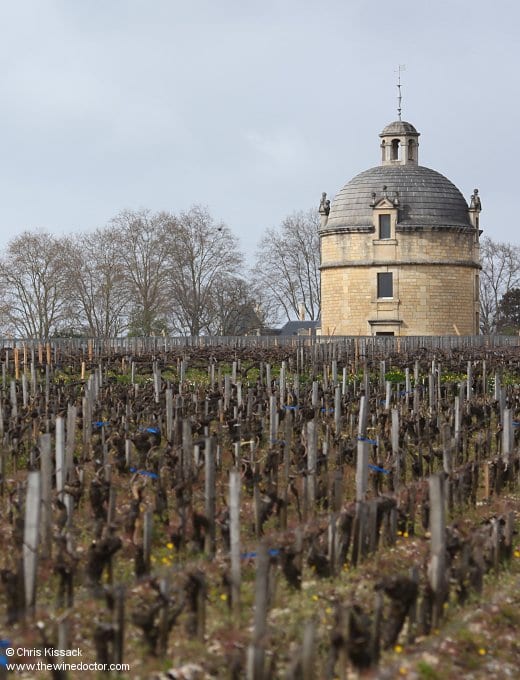Bordeaux Wine Guide: Cabernet Sauvignon
Although this is surely the grape we think of first when it comes to red Bordeaux, Cabernet Sauvignon is – in terms of area planted if nothing else – actually number two in the region, as only one-third of the red vineyards are planted to this variety. Nevertheless it defines a style, one that countless numbers of New World winemakers in California, Australia, South Africa, Argentina, Chile and beyond have tried to emulate. It is the backbone of the classic, reserved, tannic, sometimes austere and frequently age-worthy wines of the Médoc and Haut-Médoc. It may only contribute somewhere between 60% and 85% of the blend, but the wines of St Estèphe, Pauillac, St Julien and Margaux, such as Château Latour (the dovecot and surrounding Cabernet vines pictured), Château Mouton-Rothschild, Château Lafite-Rothschild and Château Margaux would not exist as we know them today were it not for Cabernet Sauvignon. And it is the combination of this variety with the deep and gravelly soils of the region that seems to work best.
The Wines
Cabernet Sauvignon does have an important role in other regions, most notably Graves and in particular Pessac-Léognan, nevertheless its contribution may be somewhat less here, perhaps 50% of the blend; it is not unusual to find wines from this region that are predominantly Merlot. Looking across to the right bank communes, here this variety is a bit player; in St Emilion it makes a significant contribution at Château Figeac (notably a chateau where the vines are planted on gravel), but otherwise it usually takes third place behind Merlot and Cabernet Franc.

Please log in to continue reading:
